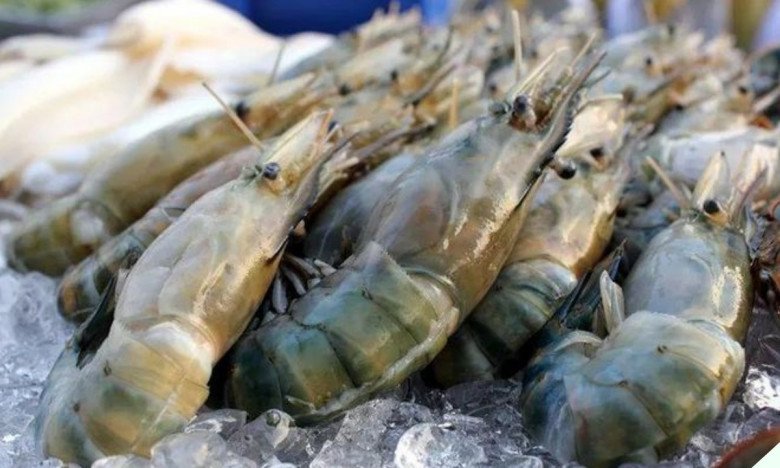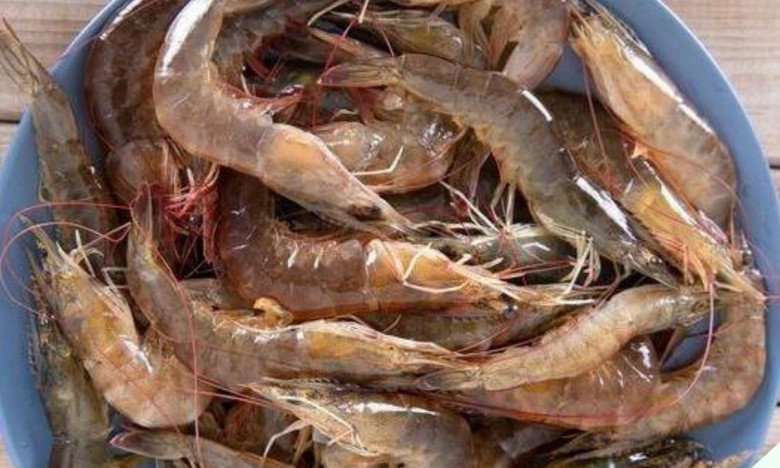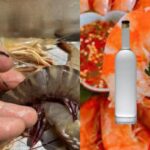When buying shrimp, whether it’s freshly caught or frozen, look out for the following types to ensure you get the best quality:
1. Blackened Heads and Tails

It’s a common misconception that blackened heads and tails on shrimp are acceptable, as long as the meat remains unaffected. However, this is incorrect.
The blackening is caused by an enzymatic reaction, often triggered by exposure to high temperatures, lack of oxygen, or other factors. Therefore, if the head and tail have turned black, it indicates that the shrimp is old and has started to spoil.
2. Milky White Flesh
Shrimp with a milky white appearance is usually a sign of deterioration:
For frozen shrimp: The milky color indicates that the shrimp has been frozen for too long, causing the back to harden and lose moisture. When cooked, the meat will turn pink.

For fresh shrimp: This type of shrimp has been dead for about 1-2 hours. Freshly dead shrimp will have a similar appearance to live shrimp, but after 1-2 hours, they will turn milky white and eventually black.
While these shrimp are inexpensive, the meat tends to be mushy and lacks the firmness and sweetness of higher-quality shrimp.
3. Strong Fishy Odor

Shrimp naturally has a distinct fishy odor, but if it’s noticeably stronger, it’s likely spoiled. Always smell the shrimp before purchasing, whether fresh or frozen, and avoid any with an unpleasant odor.
4. Slimy and Sticky Shells
Examine the shells of the shrimp before buying. If they feel sticky or slimy, or if the shell separates easily from the meat when gently squeezed, it’s best to avoid them, even if they are cheap.
Look for shrimp with smooth shells that don’t stick to your fingers, and ensure the head and body are firmly attached.

Shrimp is incredibly versatile and can be used in a variety of dishes. Fresh shrimp, when prepared correctly, can be a delicious and nutritious addition to your meals.
While there are many tasty shrimp recipes to choose from, it’s important to follow certain steps to avoid a strong fishy odor. Here are some tips to ensure your shrimp dishes turn out perfectly:
Use Lemon to Remove Odor
A simple way to eliminate the fishy odor from shrimp is to use lemon juice. After rinsing the shrimp, add a little lemon juice and let it sit for a few minutes. You can also add a few drops of lemon juice during cooking to enhance the flavor and further reduce any unpleasant odors.
Boil Shrimp in Fresh Water
For boiled or steamed shrimp, start with fresh water and add slices of fresh ginger and cooking wine before adding the shrimp. This method ensures that the shrimp cooks evenly, resulting in tender, reddish meat without any fishy odor.

Don’t Overcook
Regardless of the cooking method—frying, grilling, steaming, or boiling—avoid overcooking the shrimp. Prolonged cooking will make the shrimp tough and dry, losing its sweet and delicate flavor. For steamed shrimp, 10 minutes is usually enough to ensure tender and juicy meat.
The Ultimate Guide to Fish: A Simple Trick to Remove that Fishy Odor, Leaving a Delicious and Tender Dish You’ll Always Remember
With this fish stew recipe, you’ll create a mouth-watering, flavorful dish that will leave a lasting impression. The tender, flaky fish infused with a harmonious blend of spices and herbs will tantalize your taste buds and keep you craving more. This dish is a true culinary masterpiece, a testament to your culinary prowess that will have your guests begging for the recipe.



































